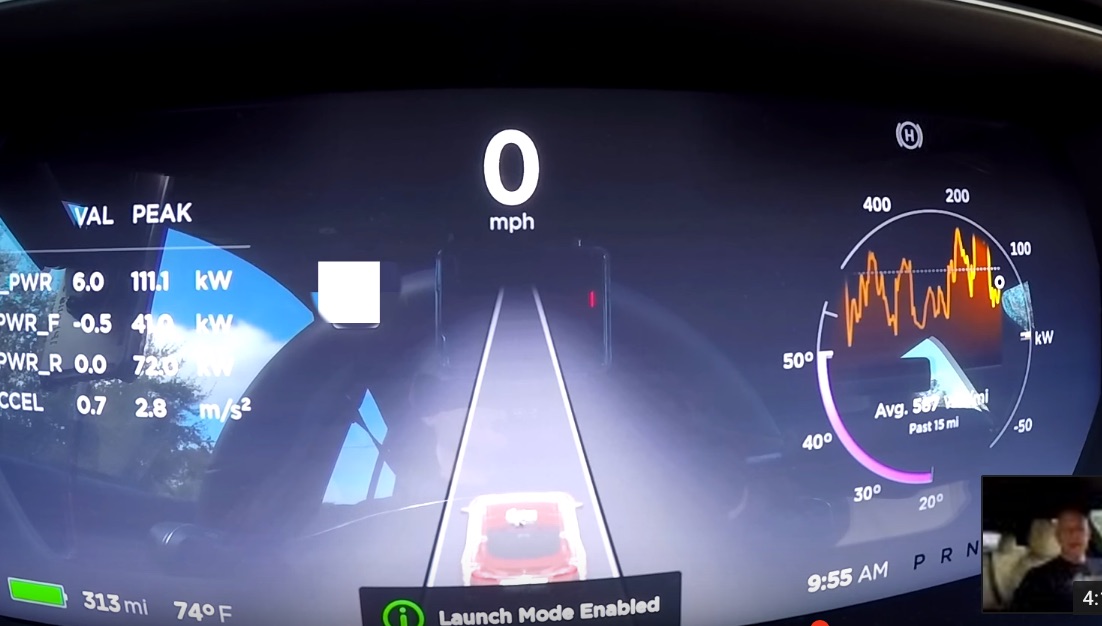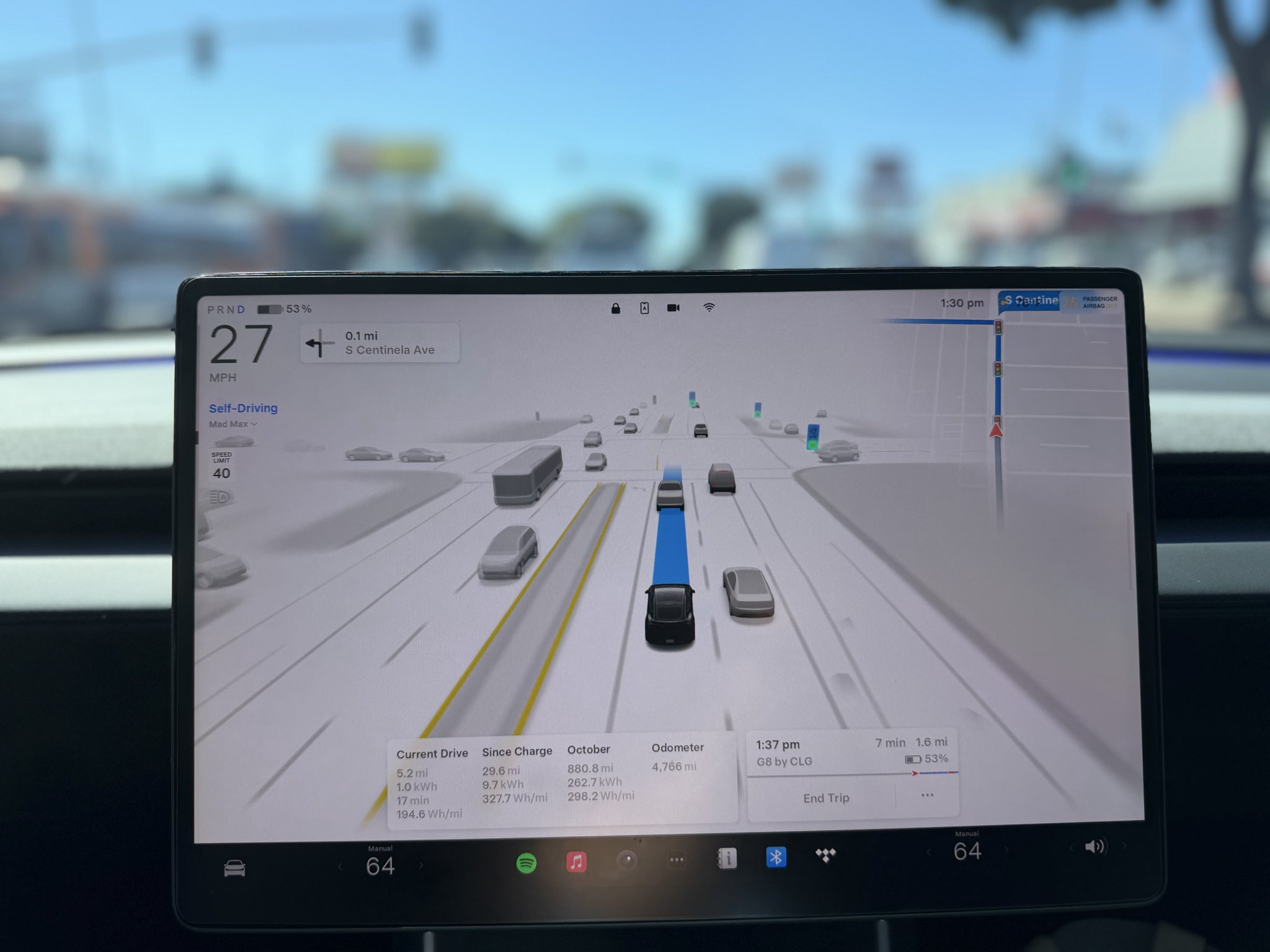News
‘Ludicrous+’ Tesla Model S P100D could see 0-60 in 2.1 sec., when ‘stripped down’

Following yesterday’s announcement that a new ‘Ludicrous+’ mode has made Tesla’s flagship P100D even quicker by dropping 0-60 mph times down to 2.4 seconds, a new tweet from Elon Musk today suggests that things could get even quicker if the vehicle was “stripped down”.
The first of a series of tweets by Musk today noted that the new P100D Ludicrous+ Easter egg on a Model S will allow it to accelerate to 60 mph in as little as 2.34 seconds. That tweet got a response from the folks at Motor Trend, who kindly offered to validate Tesla’s claim.
Bring it on! We'd be happy to validate the P100D, as we did the P90D's Ludicrous (2.6 sec) 0-60 mph time https://t.co/WzK5OmByfz
— motortrend (@MotorTrend) January 12, 2017
Also responding was Twitter user Trevor Clark who calls out Faraday Future’s impressive 2.39 second 0-60 mph time in the FF 91, but through a backhanded compliment. Clark, who mentions Musk in the tweet, notes that Faraday Future’s 1,050 horsepower electric car has no interior and uses lightweight race seats.
Related: Tech reviewer and YouTube personality MKBHD reviews Faraday Future’s FF 91
Musk would later clarify that the 2.34 second 0-60 mph time is for a production car, however a stripped down race-ready Tesla could see a mind-boggling 0-60 in 2.1 seconds. “Good point. 2.34 would be a production Tesla. Stripped down, maybe as low as 2.1.”
Good point. 2.34 would be a production Tesla. Stripped down, maybe as low as 2.1.
— Elon Musk (@elonmusk) January 12, 2017
Aside from tweeting about Tesla’s Ludicrous+ performance, the serial tech entrepreneur also noted that the company’s next iteration of Autopilot enhancement is expected to see a worldwide over-the-air roll out in the coming week. First generation Autopilot vehicles on “hardware 1” are expected to see the software update as early as this weekend, according to Musk’s tweet.
If the results look good from the latest point release, then we are days away from a release to all HW1 and to all HW2 early next week
— Elon Musk (@elonmusk) January 12, 2017
Autopilot continues to be one of Musk’s top priorities, as evidenced by the recent hiring of Chris Lattner as the new Vice President of Autopilot Software. Lattner is an 11 year veteran of Apple, where he was credited with creating of Apple’s Swift programming language used for building apps.
Once the software is fully activated, drivers of cars with the Hardware 2 package will be able to enjoy what Tesla now refers to as Enhanced Autopilot. Vehicles equipped with Autopilot 2.0 hardware, or otherwise referred to as “hardware 2″ by Musk, will be capable of operating in Level 5 fully autonomous mode once regulatory approval for self-driving cars on public roads is obtained.
Until then, Enhanced Autopilot “will match speed to traffic conditions, keep within a lane, automatically change lanes without requiring driver input, transition from one freeway to another, exit the freeway when your destination is near, self-park when near a parking spot and be summoned to and from your garage,” according to the company.

News
Tesla FSD Supervised ride-alongs in Europe begin in Italy, France, and Germany
The program allows the public to hop in as a non-driving observer to witness FSD navigate urban streets firsthand.

Tesla has kicked off passenger ride-alongs for Full Self-Driving (Supervised) in Italy, France and Germany. The program allows the public to hop in as a non-driving observer to witness FSD navigate urban streets firsthand.
The program, detailed on Tesla’s event pages, arrives ahead of a potential early 2026 Dutch regulatory approval that could unlock a potential EU-wide rollout for FSD.
Hands-Off Demos
Tesla’s ride-along invites participants to “ride along in the passenger seat to experience how it handles real-world traffic & the most stressful parts of daily driving, making the roads safer for all,” as per the company’s announcement on X through its official Tesla Europe & Middle East account.
Sign-ups via localized pages offer free slots through December, with Tesla teams piloting vehicles through city streets, roundabouts and highways.
“Be one of the first to experience Full Self-Driving (Supervised) from the passenger seat. Our team will take you along as a passenger and show you how Full Self-Driving (Supervised) works under real-world road conditions,” Tesla wrote. “Discover how it reacts to live traffic and masters the most stressful parts of driving to make the roads safer for you and others. Come join us to learn how we are moving closer to a fully autonomous future.”
Building trust towards an FSD Unsupervised rollout
Tesla’s FSD (Supervised) ride-alongs could be an effective tool to build trust and get regular car buyers and commuters used to the idea of vehicles driving themselves. By seating riders shotgun, Tesla could provide participants with a front row seat to the bleeding edge of consumer-grade driverless systems.
FSD (Supervised) has already been rolled out to several countries, such as the United States, Canada, Australia, New Zealand, and partially in China. So far, FSD (Supervised) has been received positively by drivers, as it really makes driving tasks and long trips significantly easier and more pleasant.
FSD is a key safety feature as well, which became all too evident when a Tesla driving on FSD was hit by what seemed to be a meteorite in Australia. The vehicle moved safely despite the impact, though the same would likely not be true had the car been driven manually.
News
Swedish union rep pissed that Tesla is working around a postal blockade they started
Tesla Sweden is now using dozens of private residences as a way to obtain license plates for its vehicles.

Two years into their postal blockade, Swedish unions are outraged that Tesla is still able to provide its customers’ vehicles with valid plates through various clever workarounds.
Seko chairman Gabriella Lavecchia called it “embarrassing” that the world’s largest EV maker, owned by CEO Elon Musk, refuses to simply roll over and accept the unions’ demands.
Unions shocked Tesla won’t just roll over and surrender
The postal unions’ blockade began in November 2023 when Seko and IF Metall-linked unions stopped all mail to Tesla sites to force a collective agreement. License plates for Tesla vehicles instantly became the perfect pressure point, as noted in a Dagens Arbete report.
Tesla responded by implementing initiatives to work around the blockades. A recent investigation from Arbetet revealed that Tesla Sweden is now using dozens of private residences, including one employee’s parents’ house in Trångsund and a customer-relations staffer’s home in Vårby, as a way to obtain license plates for its vehicles.
Seko chairman Gabriella Lavecchia is not pleased that Tesla Sweden is working around the unions’ efforts yet again. “It is embarrassing that one of the world’s largest car companies, owned by one of the world’s richest people, has sunk this low,” she told the outlet. “Unfortunately, it is completely frivolous that such a large company conducts business in this way.”
Two years on and plates are still being received
The Swedish Transport Agency has confirmed Tesla is still using several different workarounds to overcome the unions’ blockades.
As noted by DA, Tesla Sweden previously used different addresses to receive its license plates. At one point, the electric vehicle maker used addresses for car care shops. Tesla Sweden reportedly used this strategy in Östermalm in Stockholm, as well as in Norrköping and Gothenburg.
Another strategy that Tesla Sweden reportedly implemented involved replacement plates being ordered by private individuals when vehicles change hands from Tesla to car buyers. There have also been cases where the police have reportedly issued temporary plates to Tesla vehicles.
News
Czech Deputy excited for Tesla FSD, hints at Transport Committee review
The ANO party lawmaker shared his thoughts about FSD in a post on social media platform X.

Martin Kolovratník, a Czech Republic Chamber of Deputies member, has expressed his excitement for Tesla’s Full Self-Driving (FSD) after an apparent constituent called for a quick approval for the advanced safety system.
The ANO party lawmaker, who drives both diesel and EV, shared his thoughts about the matter in a post on social media platform X.
The official’s initial statements
Kolovratník kicked off the exchange with a post outlining his coalition’s efforts to scrap highway toll exemptions for electric vehicles and plug-ins starting in 2027.
“Times have changed. Electric vehicles are no longer a fringe technology, but a full-fledged part of operations. And if someone uses the highway network, they should follow the same rules as everyone else. That’s the basis of fairness,” he wrote.
He emphasized equity over ideology, noting his personal mix of diesel and electric driving. “For this reason, there is no reason to continue favoring one technology at the expense of another… It’s not about ideology, it’s about equal conditions. That’s why we clearly agreed within the new coalition: the exemption for electric vehicles and plug-ins will end in 2027. The decision is predictable, understandable, and economically sound.”
Tesla FSD enthusiasm
The conversation pivoted to Tesla’s FSD when X user @robotinreallife, who seems to be one of the official’s constituents, replied that other matters are more important than ending highway exemptions for EVs.
“I’m happy to pay for the highway, but I have a question about a much more fundamental matter: The Netherlands will approve the operation of Tesla FSD in February 26, a technology that has been proven to reduce accidents. The Czech Republic has the option to immediately recognize this certification. Do you plan to support this step so that we don’t unnecessarily delay?” the X user asked.
Kolovratník responded promptly, sharing his own excitement for the upcoming rollout of FSD. “I know about it. I like it and it seems interesting to me. Once we set up the committees and subcommittees, we’ll open it right away in that transport one. Thanks for the tip, I’ll deliver the report,” the official noted in his reply on X.
Kolovratník’s nod to FSD hints at the system’s potentially smooth rollout to Czechia in the coming year. With the Netherlands possibly greenlighting FSD (Supervised) in early 2026, Kolovratník’s commitment could accelerate cross-border certification, boosting FSD’s foray into Europe by a notable margin.









